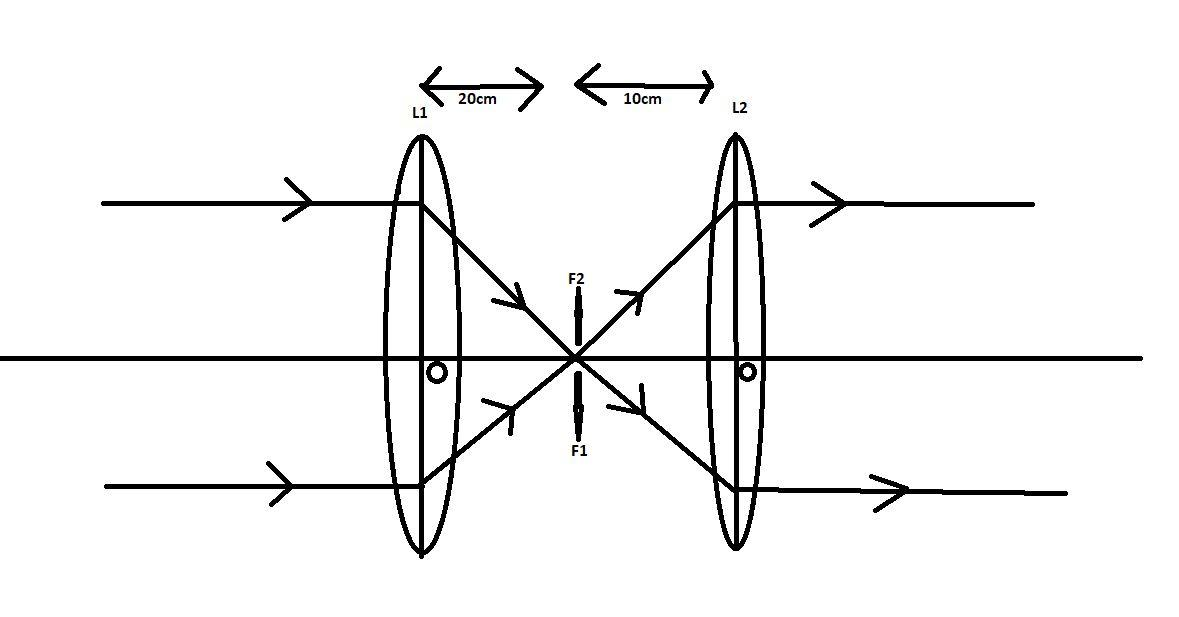Question
Question: A parallel beam of light is incident on the system of two convex lenses of focal lengths \({{f}_{1}}...
A parallel beam of light is incident on the system of two convex lenses of focal lengths f1=20 cm and f2 =10 cm. What should be the distance between the two lenses so that rays after refraction from both the lenses pass undeviated.
A. 60cm
B. 30cm
C. 90cm
D. 40cm
Solution
Hint: As the ray after refraction passes undeviated after refraction from both the lenses hence the distance between the lenses must be equal to the sum of the focal lengths of the lenses.

Complete step-by-step answer:

We know that,
f1=20cm
f2=10cm
As the rays passes undeviated the image formed by the first lens must be at the focal length of the 2nd lens, that means that the distance from the point of formation of image and 2ndlens is 10cm as focal length of the 2ndlens is 10 cm.
Therefore, the total distance between the two lenses is,
d=f1+f2
d = (20+10) cm
d=30cm
Therefore Option(B) 30cm is the correct option.
Note: As both are convex lens we can figure out that two rays coming from infinity will pass through the focus of the first lens, and as the rays are undeviated it is a must that they fall on the focal length of the 2nd lens then only it can pass undeviated. We know that to form an image minimum of 2 light rays must fall on the lens so that one passes from the focus and another through the optical center forming the image on the other side where both the rays merge.
